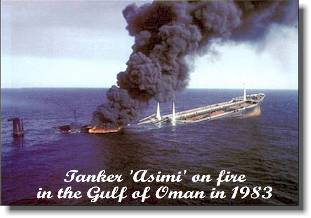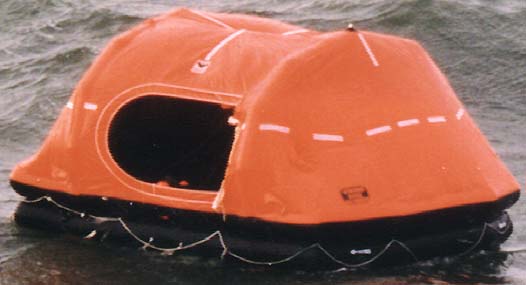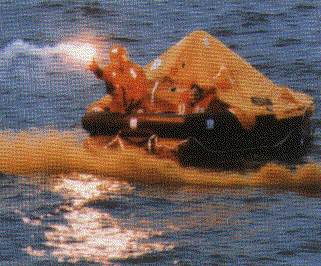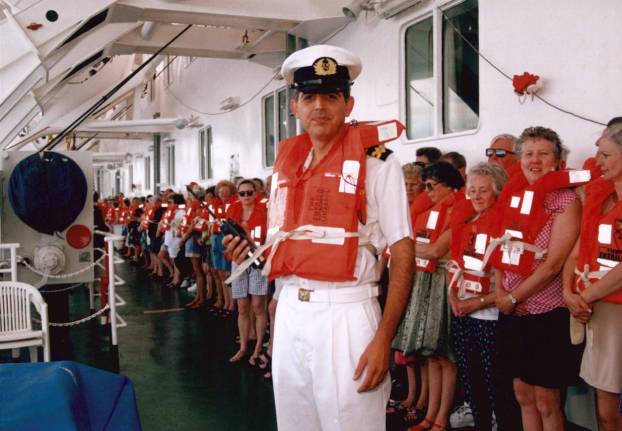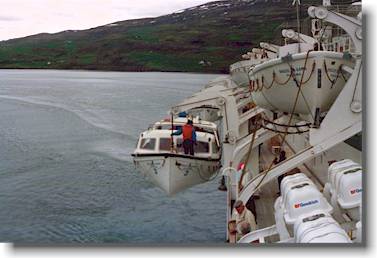 |
|
|
If a boat sinks, the people on board need to get off into another boat. How difficult this is depends on how fast the boat sinks, and how bad the weather is. |
|
|
|
Yachts that sail between countries must carry a life raft like this. It is all folded up, but when you pull a string, it inflates to this raft with a shelter. You can stay alive on one of these for as long as you have food and water, but it isn't very comfortable. |
|
The liferaft will carry flares also. If a boat is in trouble, it radios for help. Then, if a plane or another boat comes near, you send up flares so they can see exactly where you are. Some flares you hold in your hand, and they let out lots of smoke - these are good for daytime. Other flares go high up in the sky like a rocket, and have a light that keeps burning as it falls back down. These are best for night time. |
|
